In a world where data breaches are as common as bad coffee, understanding HIPAA cloud compliance isn’t just a good idea—it’s essential. Imagine your sensitive patient information floating around in the cloud like a lost balloon at a birthday party. Not the best scenario, right? With healthcare shifting to the digital realm faster than you can say “protected health information,” ensuring compliance is crucial for safeguarding patient data.
Navigating the labyrinth of HIPAA regulations might feel like trying to solve a Rubik’s Cube blindfolded, but it doesn’t have to be daunting. With the right strategies and tools, organizations can confidently embrace cloud solutions while keeping their data secure. So, let’s dive into the essentials of HIPAA cloud compliance and discover how to keep that data safe without losing your sanity—or your sense of humor.
Table of Contents
ToggleUnderstanding HIPAA Cloud Compliance
HIPAA cloud compliance involves adhering to the Health Insurance Portability and Accountability Act requirements while utilizing cloud services. These regulations protect sensitive patient information as healthcare organizations increasingly rely on cloud technology.
What is HIPAA?
HIPAA stands for the Health Insurance Portability and Accountability Act, enacted in 1996. This federal law sets standards for safeguarding patient health information. Covered entities include healthcare providers, health plans, and healthcare clearinghouses. HIPAA also applies to business associates who handle protected health information on behalf of these entities. Compliance with HIPAA ensures that patient data remains confidential and secure, promoting trust between patients and healthcare providers.
Importance of HIPAA Compliance
HIPAA compliance plays a critical role in the healthcare industry. Protecting patient information reduces the risks related to data breaches, which can incur severe penalties. Non-compliance can result in fines ranging from $100 to $50,000 per violation. Maintaining compliance not only safeguards sensitive data but also fosters a positive reputation for healthcare organizations. Trust is crucial for patient engagement, and meeting HIPAA requirements strengthens that trust. Implementing compliant cloud solutions enables organizations to leverage technology while prioritizing patient privacy and security.
Key Requirements for HIPAA Cloud Compliance
Organizations must meet specific requirements to achieve HIPAA cloud compliance. Focus on the Privacy Rule and Security Rule as foundational elements of compliance.
Privacy Rule
The Privacy Rule establishes standards for handling protected health information (PHI). Organizations need to limit access to PHI to only those authorized to view it. Proper training for employees ensures they understand their responsibilities in protecting patient information. Patients must also receive clear notifications regarding how their information is used and shared. Implementing robust privacy policies minimizes the risk of unauthorized disclosures. Regular audits help identify potential gaps in compliance, allowing organizations to address them promptly.
Security Rule
The Security Rule mandates safeguards to protect electronic PHI (ePHI). Organizations must deploy technical, administrative, and physical safeguards to ensure data security. Encryption of ePHI is critical, especially when data is transmitted or stored in the cloud. Access controls, such as unique user IDs and passwords, prevent unauthorized access to sensitive information. Regular risk assessments identify vulnerabilities in security measures, enabling organizations to strengthen their defenses. Training personnel on security best practices fosters a culture of compliance and security awareness throughout the organization.
Choosing a HIPAA Compliant Cloud Provider
Selecting a HIPAA compliant cloud provider requires careful consideration of various factors. Organizations must prioritize the security and privacy of protected health information (PHI).
Factors to Consider
Evaluate the provider’s history of data breaches and compliance incidents. Assess the security measures in place, such as encryption, access controls, and secure data centers. Determine whether the provider conducts regular risk assessments and audits. Review available support options, ensuring timely assistance during emergencies. Examine how the provider handles data backup and recovery in the event of outages. Investigate the scalability of services to meet growing organizational needs. Lastly, check if they offer training resources for staff to foster compliance awareness.
Questions to Ask Providers
Ask providers about their HIPAA compliance certifications and procedures. Inquire about how they safeguard ePHI, including encryption standards and access protocols. Seek information on incident response plans and breach notification processes. Discuss the frequency and scope of security audits conducted. Clarify how they ensure third-party vendors also comply with HIPAA. Find out their policies regarding data ownership and portability. Confirm their support for regulatory audits, offering assistance when necessary.
Challenges in Achieving HIPAA Cloud Compliance
Achieving HIPAA cloud compliance involves various challenges. Organizations must navigate complexities while protecting sensitive patient information.
Common Pitfalls
Organizations often overlook comprehensive risk assessments. Failing to regularly evaluate security measures leads to vulnerabilities. Lack of staff training can create compliance gaps as employees might not recognize best practices. Misunderstanding contract terms with cloud providers can result in data liability issues. Many organizations mistakenly believe that simply choosing a cloud provider guarantees full compliance. Inadequate monitoring of third-party vendors hinders the overall security framework. Each of these pitfalls can significantly increase the risk of non-compliance.
Best Practices for Overcoming Challenges
Conducting regular risk assessments strengthens compliance efforts. Establishing clear communication with cloud providers ensures understanding of security measures. Training staff consistently fosters awareness of HIPAA requirements. Reviewing and updating contracts with vendors maintains data security and compliance. Implementing stringent access controls limits exposure of protected health information. Regularly monitoring both internal and external data sources enhances overall protection. These best practices fortify organizations against potential compliance challenges.
Conclusion
Navigating HIPAA cloud compliance is essential for healthcare organizations aiming to protect sensitive patient information. By understanding the regulations and implementing best practices, organizations can leverage cloud technology while ensuring data security. Choosing the right cloud provider is crucial and requires thorough vetting to avoid potential pitfalls.
With the right strategies in place, organizations can foster trust with patients and enhance their reputation. Prioritizing compliance not only safeguards data but also positions healthcare providers to thrive in a digital landscape. Embracing these practices ensures that patient privacy remains at the forefront of cloud solutions.



